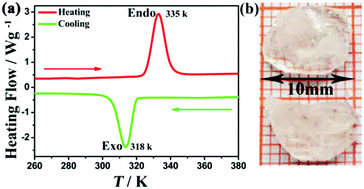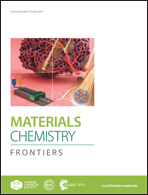Visual low-high interchange in a dielectric switch for trimethylchloroethylamine tetrachlorozincate with a large leap symmetry breaking†
Abstract
Phase transition materials are a class of smart materials with special optoelectronic properties. In particular, high symmetry has proven to be the most advantageous feature for thin film devices. However, phase transition design, particularly with high symmetry, is a huge challenge. Herein, based on the advanced molecule reported by us, [(CH3)3N(CH2)2Cl]2[ZnCl4] (1) was verified to be a phase transition dielectric crystal with an infrequent large leap symmetry breaking from P21/c to I41/a at 333 K. The dielectric value exhibited a remarkable step-like enlargement around TC, suggesting a standard and visual low-high interchange of dielectric switching. The existence of dielectric switching properties triggered by a thermal stimulus is intrinsically induced by the anionic and cationic order–disorder motion. It creates a little anisotropy along all axial directions in numerical values and cardinal numbers, which is very beneficial for the cultivation of large-size crystals and the fabrication of corresponding devices.



 Please wait while we load your content...
Please wait while we load your content...